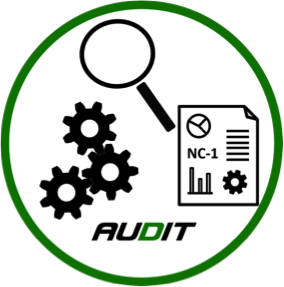How to Plan Environmental Audits
 I was pleased to share my experiences of environmental auditing again recently on a very well attended IEMA webinar. I was joined by Gillian Gibson (Gibson Training), Ben Goodwin (IEMA) and Matthew Goldberg (National Grid).
I was pleased to share my experiences of environmental auditing again recently on a very well attended IEMA webinar. I was joined by Gillian Gibson (Gibson Training), Ben Goodwin (IEMA) and Matthew Goldberg (National Grid).
We are all part of IEMA’s Environmental Auditing Committee, a working group of experts ranging from consultants, in-house auditors and UKAS the organisation that oversees certification bodies. We are reviewing the IEMA Register of Environmental Auditors and prepared briefing papers on the value of environmental auditing.
The committee has also developed a series of webinars, some for experienced auditors and others for those new to the industry – the latter, the Environmental Auditing 101 series, examines different elements of auditing and the ISO 14001 standard.
This, our most recent webinar, was titled ‘Planning, scoping & resourcing for successful audits’. This was obviously a subject of great interest as we had over 500 people join us.
Pitfalls of not planning
Why should you prepare for an environmental audit?
Well, we all know the famous Benjamin Franklin quote “If you fail to plan, you plan to fail” – or, as I like to say… “What could possibly go wrong?”.
Without good preparation, you run the risk of:
- Not covering everything that’s needed.
- Auditees may not be available on the day – busy people have jammed-packed diaries after all. They may not be prepared – no time to think, no paperwork gathered. Or they may be really worried about the audit – a bit bunny in headlights.
- You don’t make best use of the day, of your time or theirs – you may be waiting around for people or info to become available. The client may be paying for your audit, so you’re wasting their money as well.
- You don’t get the best from your audit team.
- Ultimately, it’s frustrating for all involved – you end up compromising on content or, even worse, the quality of your investigations.
ISO 19011
I introduced the standard ISO 19011 – Guidelines for auditing management systems. This lays out the key elements of running an audit, preparing for it, setting the team, conducting the audit on site and writing up the report.
The webinar wasn’t the correct place to go through ISO 19011 in detail, but I did draw attention to a couple of the clauses: 5.5 Implementing audit programme and 6 Conducting an audit.
Planning audits – what to consider
I ran through some of my ideas of what to plan:
- Consider the whole Environmental Audit programme, its objectives and how your audit fits in.
- It is very important to make contact with auditee in good time. Agree time(s), location(s), main point of contact, any requirements for coming on site.
- Understand the audit objectives, scope & criteria. The scope could cover specific clauses of the ISO 14001 standard, certain environmental aspects or maybe locations or departments of the company.
- Agree the agenda & send it in advance.
- Develop your audit plan and consider also audit methods – document reviews, interviews, observations etc.
- Ask for documentation in advance so you can go over things properly – this could key EMS documentation, previous audit reports etc.
- Although it seems really obvious, consider the equipment you need – notebook/pens, recording equipment (phone/camera), PPE (including footware), waterproofs. If the audit is remote, consider the IT, connectivity and other equipment needed.
- Think about travel arrangements and accommodation if you’re staying overnight.
- The last point I covered, giving a segway to the next presentation, was to consider the audit team.
What makes a good auditor?
Gillian covered what some key characteristics of a competent auditor. They should be good listeners but use all their senses; be able to ask the right questions & understand the answers; know when to pursue an audit trail and when to desist; and be flexible when the audit takes an unexpected turn.
An audit team may need to be established, so consider who will be involved – their skills, knowledge and experience. Who is deemed the lead auditor (who has specific roles in the audit), compared to the support audit team.
An auditee’s perspective
Lastly, Matthew gave the Auditee’s Perspective – the importance of good planning to get your colleagues prepared, ensure the key risks are covered and you have all the evidence properly gathered.
We finished the webinar with Q&A. With so many attendees, we could only cover a couple of questions – we are preparing answers to their submitted questions. But one question that came up was how get started in the auditing profession. I mentioned the range of training course run by IEMA and to try to get a mentor, who is ideally a Lead Auditor. They should be able to guide you, give advice and maybe even some experience joining an audit.
If you need help with your EMS Audit Programme, please give me a call.
IEMA members can watch the webinar again here.

